Los Angeles’s homeless crisis in six charts

Anyone who lives in Los Angeles knows what homelessness “looks like”: rows of tents on sidewalks, people sleeping in doorways.
But the scope of this long-running humanitarian crisis in the nation’s second-largest city goes well behind those images of desperation. On June 29, the Los Angeles Homeless Services Authority released its latest snapshot from the three-day count it conducted in January. The headline points to a region trying to outrun an avalanche: an increase of 9% countywide in the number of people experiencing homelessness in just the past year. The city increase was 10%.
How do we make sense of that?
The total number of people experiencing homelessness in the county, including those living in temporary housing, cars or on the street, is 75,518. That’s roughly the size of Gary, Ind., or Mountain View, Calif. Over the past five years, the number has grown by 40%.
Here’s what that increase looks like when you put it in a chart:
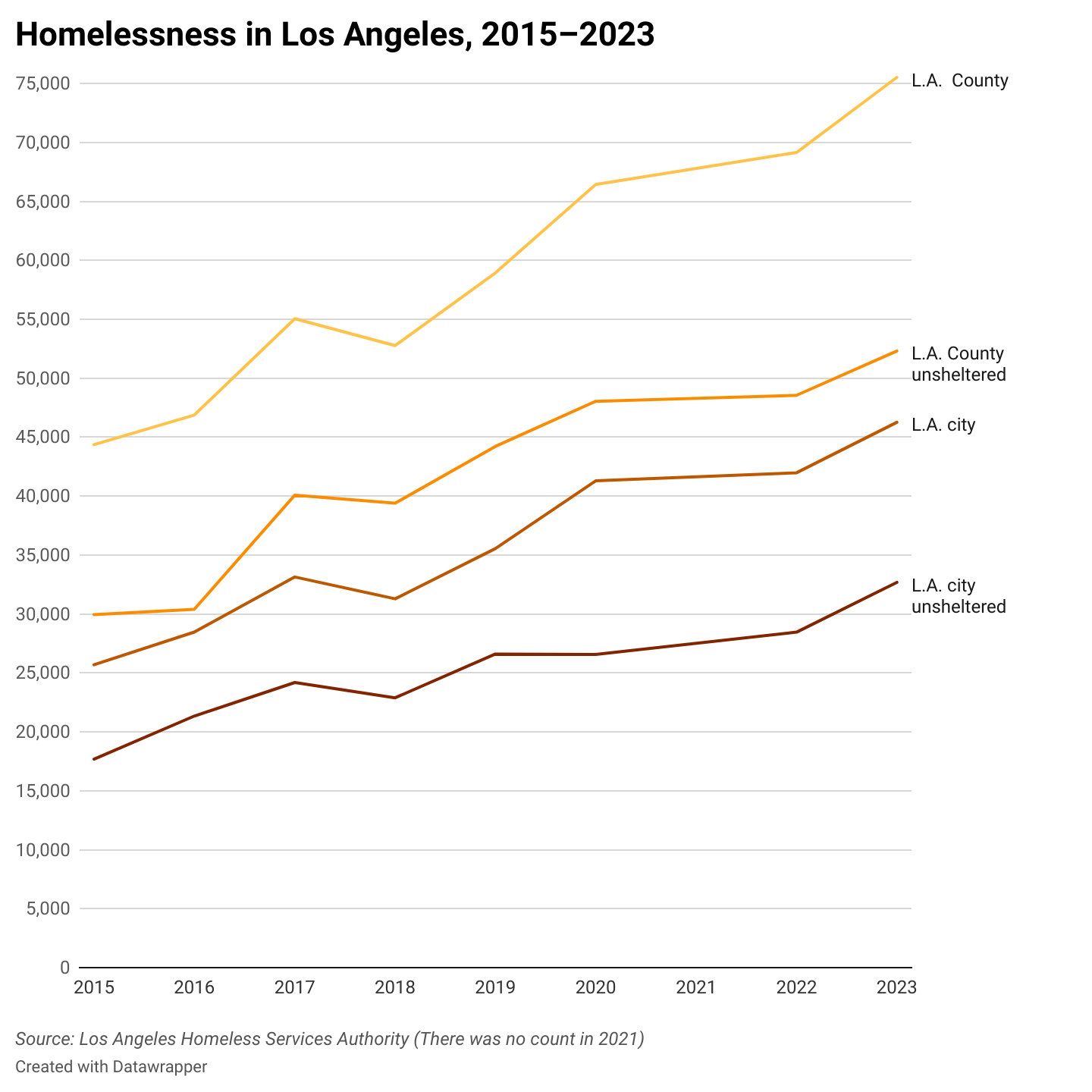
Just in the city of Los Angeles, there are now 46,260 people experiencing homelessness. That’s as if every resident of Encino didn’t have a place to live. It also came after the city had already spent billions on the problem, from building housing to support services.
[Get crime, housing and other stats about where you live with the Crosstown Neighborhood Newsletter]
Mayor Karen Bass has sought to put a new sense of urgency on the crisis, and has aimed to bolster relationships with county, state and federal authorities. She declared a homelessness state of emergency on her first day in office in December. A key part of her policy is the Inside Safe program, which aims to move people out of tent encampments and into motels and hotels.
Bass recently said Inside Safe housed more than 1,300 people during its first six months.
Priced out
Many factors contribute to a soaring homeless count. Chief among them is rapidly rising housing costs. During the pandemic, some areas in the county saw rent jumps of more than 20%, though the pace of increases has slowed in recent months.
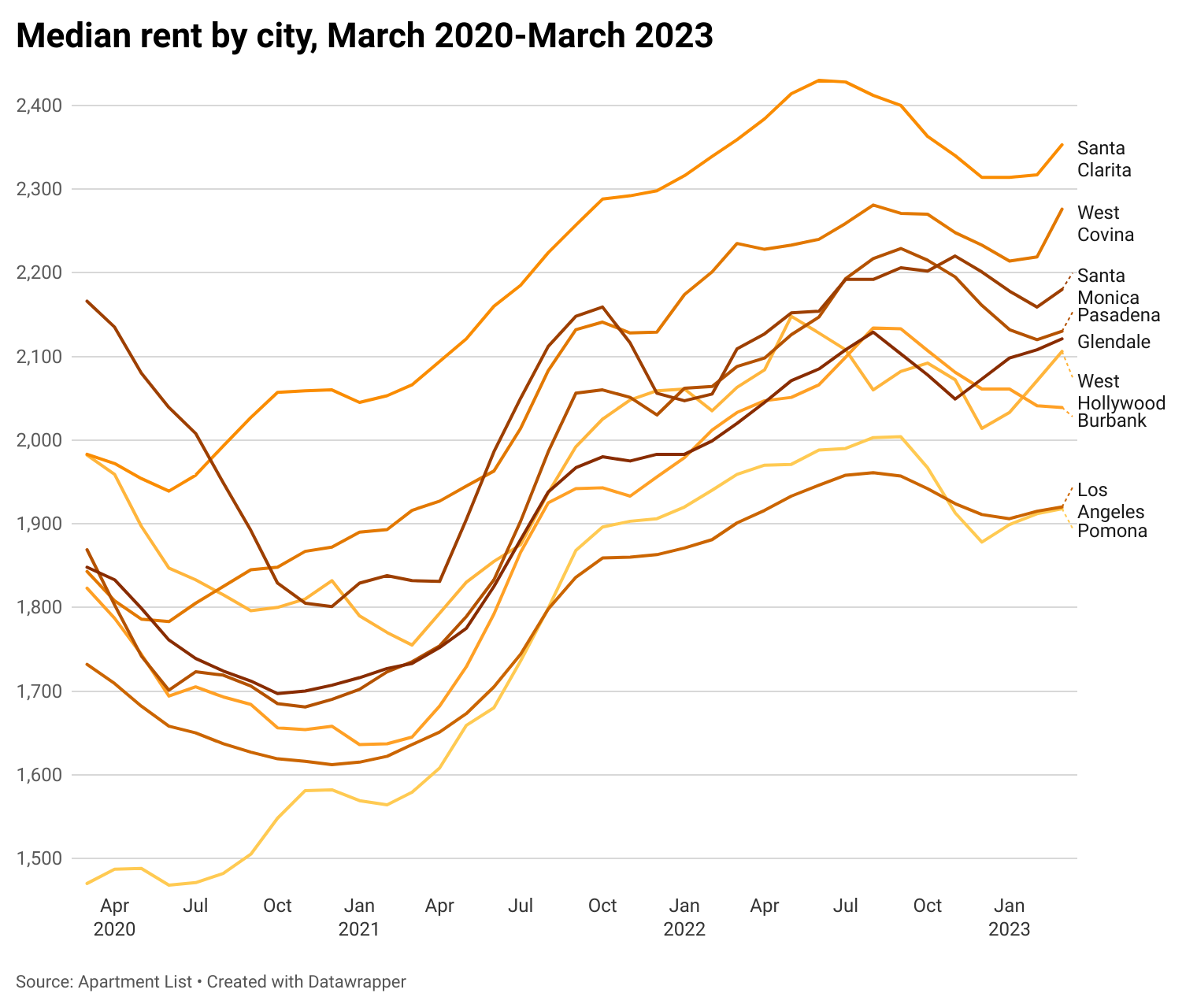
Building new housing takes time and money, and requires wading through thickets of red tape. Both Bass and the state of California have tried to cut some of that bureaucracy. Just this month, the Los Angeles City Council made permanent Bass’s policy of streamlining the permitting process for affordable housing projects.
Gaping inequities
Black people in Los Angeles are much more likely to fall into homelessness than any other population, a fact which LAHSA called a consequence of “systemic racism.”
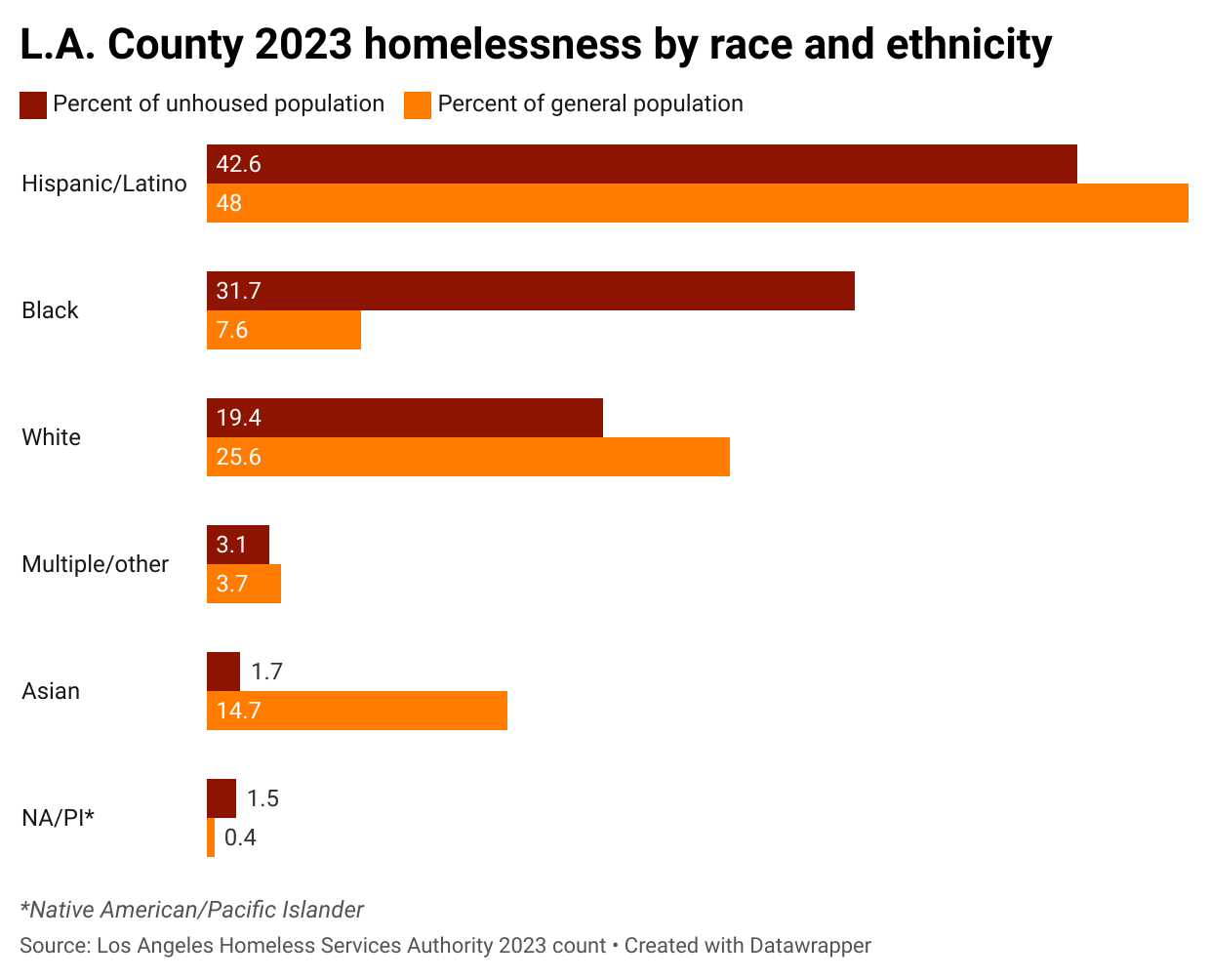
Homelessness and crime
As the unhoused population has ballooned, so have the number of criminal incidents in which a person experiencing homelessness was either the victim or the suspect. Living on the street, exposed, makes someone much more likely to be the victim of a crime.
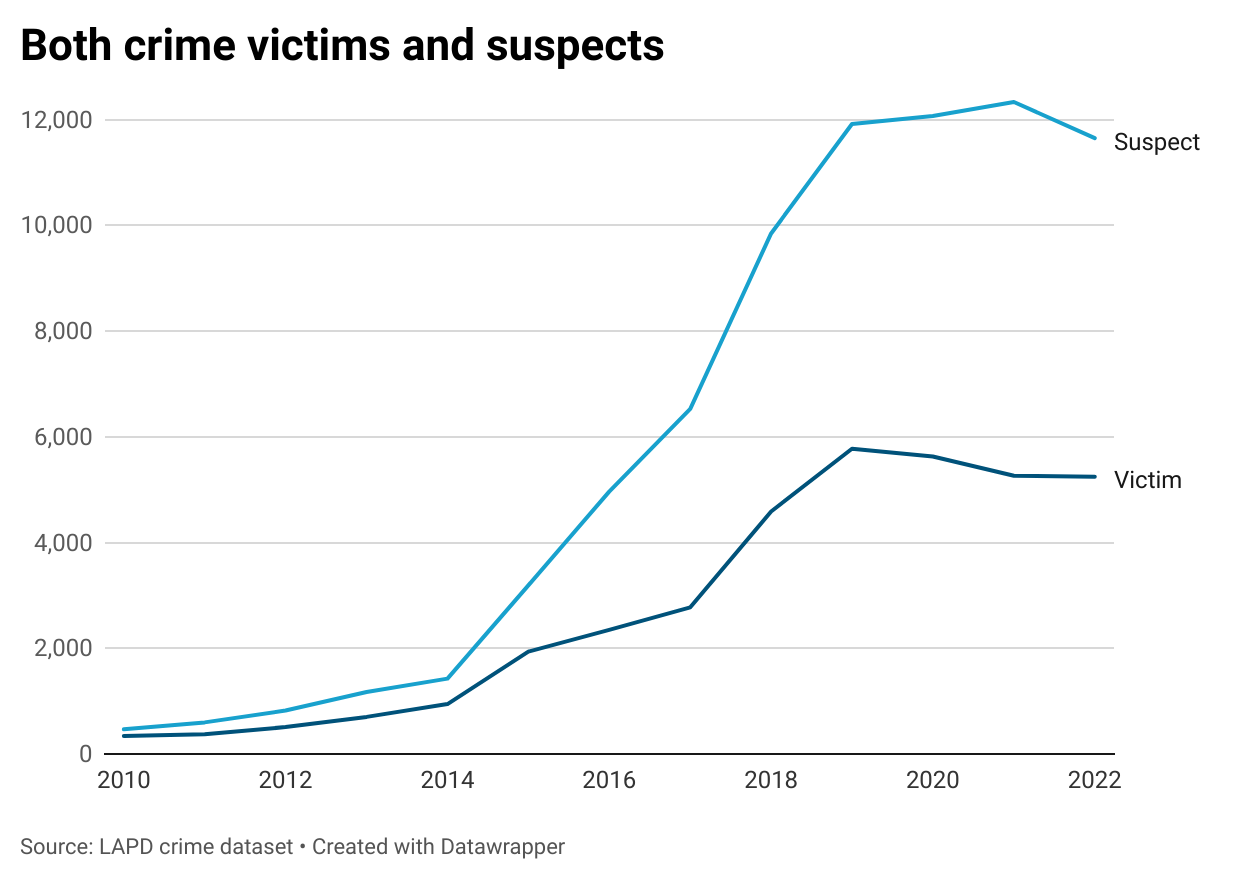
Unhoused and murdered
Last year, roughly one out of every four homicide victims in the city was a person experiencing homelessness. In fact, the murder of unhoused people was a significant factor in the increase in killings across the city over the past three years.
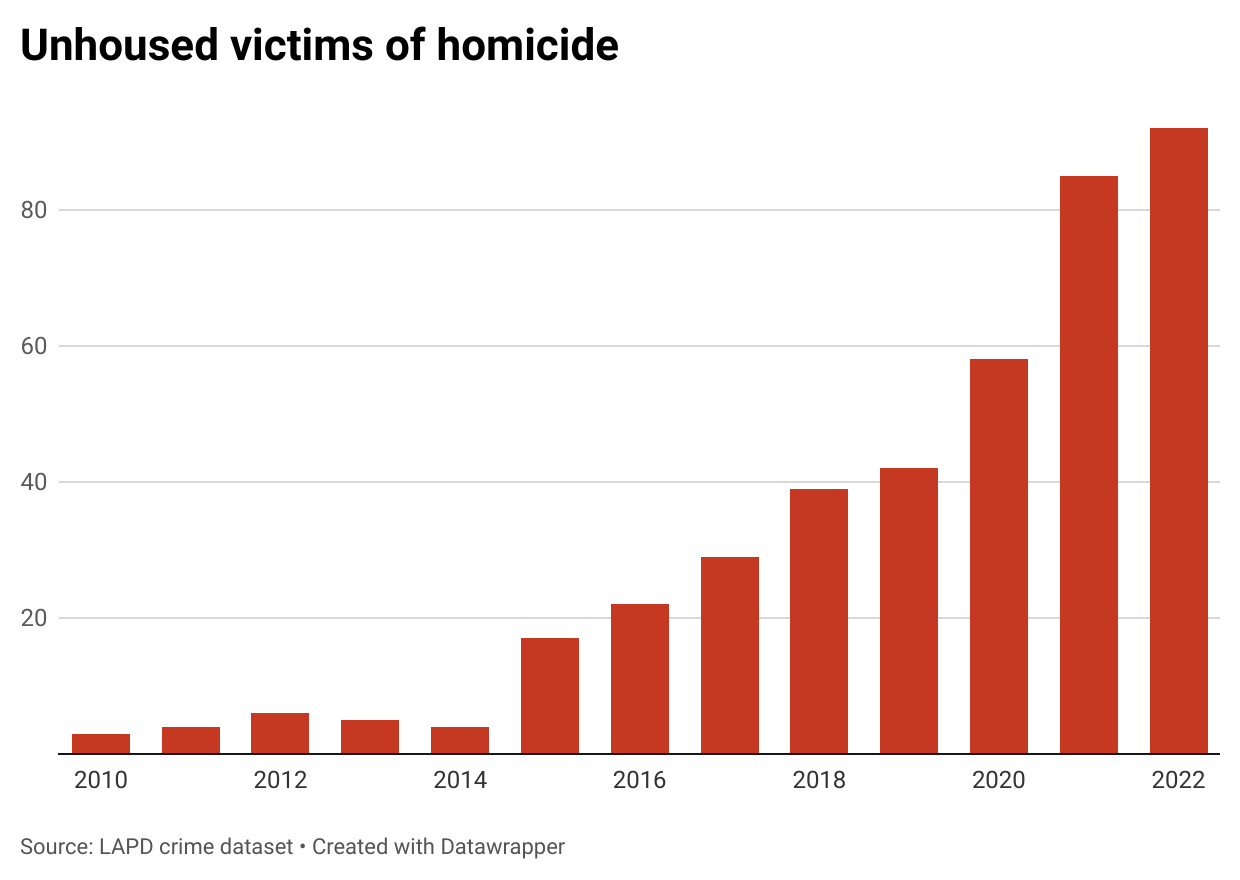
Desperate neighbors
How do residents react to encampments that encroach on their living space? Increasingly, they report them to the city’s MyLA311 service. Those calls don’t achieve all that much. Enough of them might prompt the city to order a cleanup. But that just moves people from one sidewalk to another.
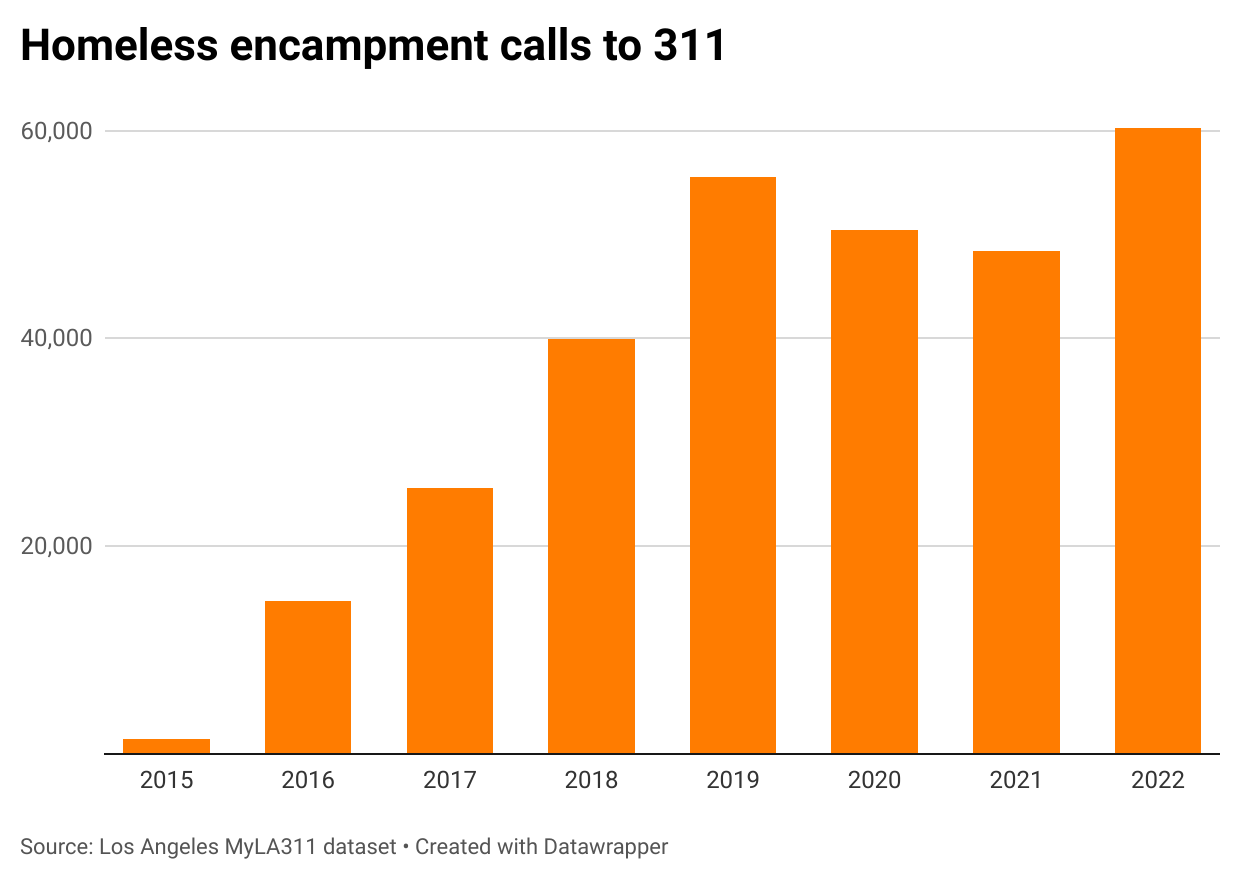
The efforts to get at the root of the crisis continue. Bass secured an unprecedented $1.3 billion in the new city budget to dedicate to homelessness. On Friday, just 24 hours after the reveal of the new homeless count numbers, Bass announced another Inside Safe deployment, this one in Baldwin Hills. It is the 21st Inside Safe operation.
How we did it: We analyzed data from the past eight LAHSA counts, as well as publicly available data from the LAPD and the MyLA311 service.
Interested in our data or have questions? Email askus@xtown.la.






